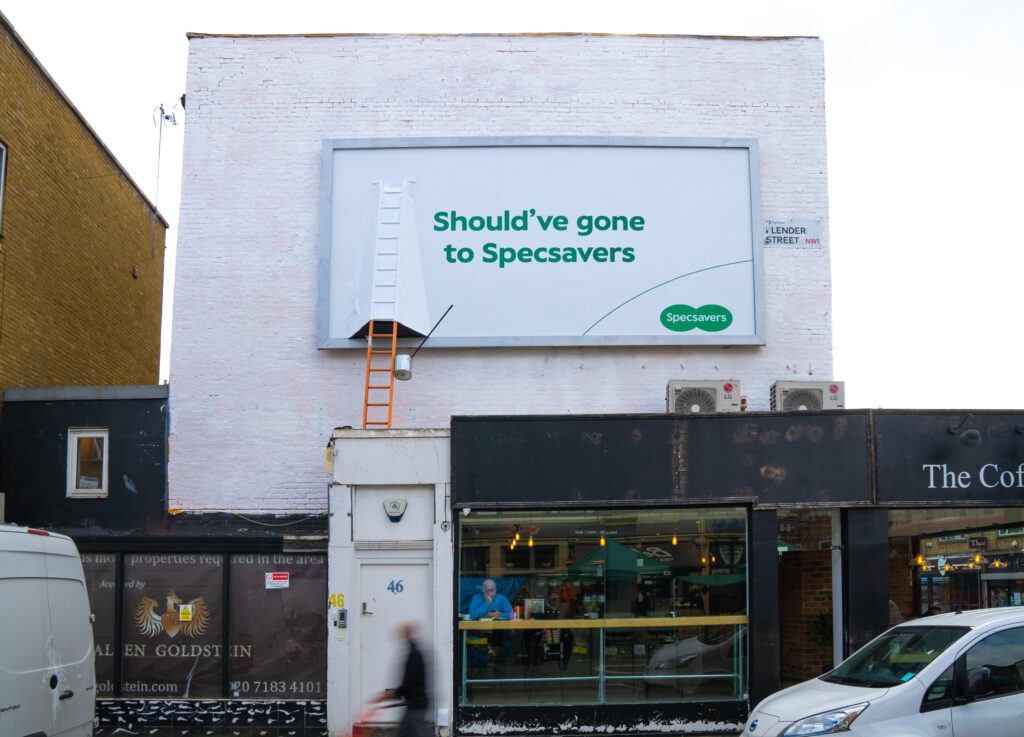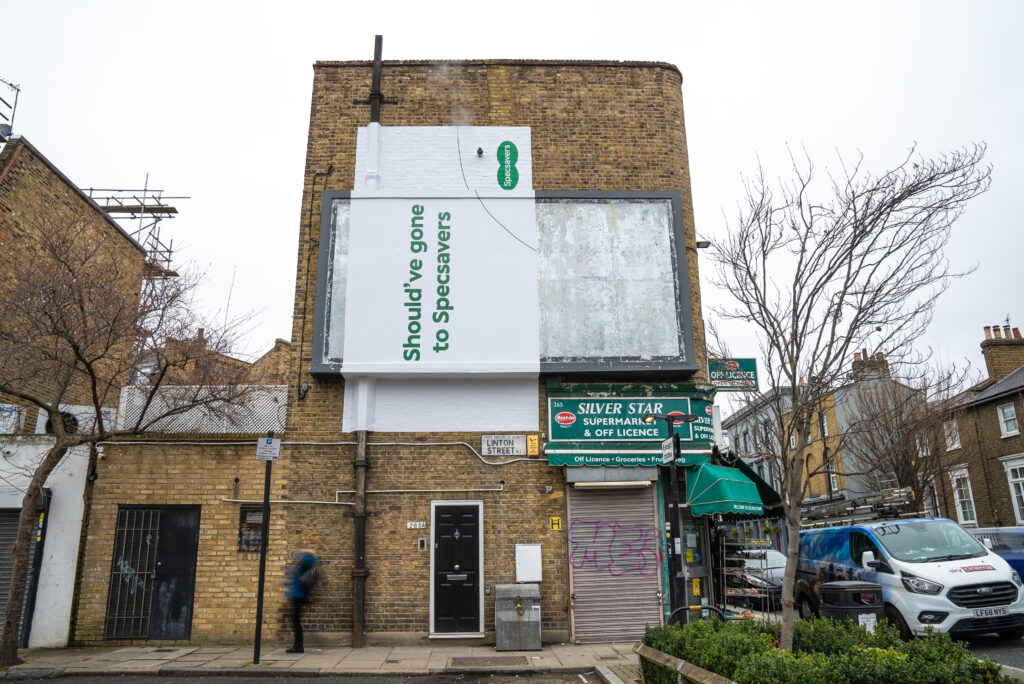IHALC’s Patrick Burgoyne talks to Specsavers Head of Creative Operations Julia Arenson about the evolving role of the Specsavers in-house agency and how it makes and measures great creative work
PB: I think I’m right in saying that Specsavers Agency started as an in-house creative department. What are the key things that have marked its evolution to where you are now?
JA: It was very much a creative department. We wanted to move towards being an integrated agency. So we did that by starting from the ground up, defining our foundations or departments, the roles and responsibilities within those departments and then giving clear ownership and autonomy to the teams. We also established a client partnership team to be the bridge between the agency and marketing, to help develop communications and facilitate the great work that we’re trying to do. I think where we were struggling before is because it was more of a creative department without really clearly defined roles and responsibilities. People didn’t know exactly what their remit was, and people were just getting pulled in to do lots of different things, wearing lots of different hats. Everybody was just mucking in and doing the work. And they did great work. But I think as we’re growing we just need to do it in a more defined, systematic way.
PB: What are the skills that you’ve added to the team in recent times?
JA: The most recent skill that we’ve added to the agency is the client partnership team. That’s been really, really important. And it massively changed the way that we work with clients, it really helped the relationship. There’s a big debate in-house over do you need client partnership or not? Because you’re in house, you shouldn’t have to manage the client. But if you don’t have them, everybody’s doing client management, and it takes up a lot of time. You end up with a lot of meetings where you’ve got creatives and designers and strategists involved – a client partner can go and get that information and feed it back so that people are spending more time doing what they’re meant to be doing, instead of being sat in meetings trying to get information. They are also fundamental in setting the conditions for the whole team to succeed. So for us, it’s been really important, not just for helping us with the client relationship, but also helping us with our inter-agency relationships and knitting us together. It’s been a breath of fresh air for everybody in the agency and all around us.

PB: What about the importance of the language around that, because they are a client partnership team, not a client service team. What are you trying to convey with the language around that?
JA: It is about partnering the client, right? We’re in-house, so it means we’re all on the same side, we’re playing on the same team. And we do have a service mentality in the agency. But partnering a client means that we’re supporting them get to get to the best possible work rather than being in service to their requests. And I think that slight nuance is really important. It just gives us the ability to challenge and work together to get to the best answers instead of just delivering – we’re not here to just do delivery.
PB: At Specsavers, you are branded as the Agency, you sit in a separate space, which looks different to the rest of the business: tell us about why that approach is right for Specsavers.
JA: The agency at Specsavers is actually part of Group marketing, we’re very much on the same team, but by creating a distinct agency we’re able to build on our identity within that space. And I think without having that identity, it might not allow us the freedom to operate with our own ways of working that can partner marketing as well as other areas of the business as well. And it gives us the ability to grow and support the functions that need us, not just marketing. It also gives us an identity within Adland as a full-service agency – we’re trying to build that identity, to build that culture and pride in us as a full-service agency. So I think for us, it really made sense.
PB: You still use external partners for some areas?
JA: We use external partners for media, always-on social and PR, and they work really, really closely with us. I think the way that we’ve positioned ourselves as the brand guardians and the leaders on creative and conceptual strategic projects is about making sure that we’re taking the right people on the bus at the right time. We really look at them as an extension of ourselves and that has really helped us get away from that culture where people are constantly trying to cannibalise each other’s work. It’s like, ‘this is what you’re here to do, this is your specialism, we need you here’. We don’t have that land grab every time a brief comes out, which is really nice.
PB: Can you just talk us through your model in terms of how you budget and also your charging model?
JA: We don’t charge internally at all. We review the requests that come in, and we assess our resource based on those requests. And if we don’t have the capacity, we either prioritise work or bring in additional support where we need it. So we’ve established a structure and a process where we’re always trying to do right by the work, the work’s got to come first. And the transparency around resource and clarity around the ask means that we can get to the right shape and request additional budget to get more people in or move the work around. So it’s really about what makes sense. The closeness and the relationship between our marketing team and us and Nicola [Wardell, MD of The Agency] and our CMO means if we do need something, we can have that conversation or she’ll get together with the marketing director and bring it to the CMO to say, actually, we really think we need some more people on this. It’s all about relationships and communications and understanding what we want to achieve.
PB: How do you prioritise and also categorise different types of work that you get asked to do?
JA: We are in the midst of introducing the tiering our work in three pillars, which we’re calling Create, Calibrate and Deliver. Requests come at us from everywhere, and anywhere in the business – if anybody needs something they come to us. By establishing these tiers, we’re putting some guardrails around the team that you will have, depending on the type of work that you request. So if you’re in the Create area, that basically means we’re doing new strategic work, we need a new concept, we need to create some new assets. So you get your client partner, your creative producer, your creative director, and your strategist. It’s a completely different process than we have for Calibrate and Deliver. Calibrate is applying existing guidelines or using existing assets. Before, we just had create and deliver and what we were finding was that our strategists, and our conceptual thinkers, were spending a lot of time just applying what they already know. And it just meant that the work that we needed to focus on conceptually and strategically was suffering. So we took that out, and we’ve moved it into what we’re calling Calibrate, with a new set of project managers to manage that work. For Deliver, you’ll go through a studio manager, there should be no amends, it should just go through. So it’s really, really establishing our tiers of work to operate in the most efficient way and have the right people spending the right amount of time in their areas where they’re going to have the most impact on the work. We’re trialling it slowly on projects, where we’ll ask, Okay, are we creating something new? Okay, that’s going to go through that process. Are we applying something we already know? Or are we just sending something out?
It’s really clear on our processes in terms of when people get involved. People want to do beautiful bespoke work, of course we do. But at the end of the day, we’ve got to send it to like millions of people in all these different formats. So it’s really important that we’re involving people at the right stages. The people in Deliver will be our production artists, or art workers. They’re there to adapt something so it doesn’t get signed off by a creative director or design or anything like that. The assumption is that once we have a master signed off, and we’re ready to adapt, that is it, the production art team will just send it out.
It was really important that people in every department know what their role is, and making sure that they’re delivering the best possible work and also to know who to escalate to, if they think that actually maybe that work’s not right. So everybody’s very, very clear on their roles and responsibilities in those different areas by the request type.

PB: How do you assess creative work?
JA: We have got a creative scale, it’s in every single meeting and it goes from one to 10, one being toxic, and 10 best in the world. We have that in all of our meeting rooms in the agency, and we get together with the marketing team every six to eight weeks and we put our work up on the walls. We look at all that work together and we go around the room and people give it their number on that scale. And then we ask where could that have been if we had maybe done something slightly differently? And where do we want our work to be next time? A lot of the time you have your heads down, you’re trying to just get the work done, you’re trying to do great work, so this is a chance to lift our heads up and ask what we want the work to be and how do we get there?
What do we love about this campaign? Where do we feel like we could have done more? If there’s stuff that hasn’t gone live yet, do we feel good about it? Do we need to change it? So it’s about being in the moment and lifting your head, but also looking back and assessing and creating those spaces to do that together.
Julia Arenson was speaking at the last IHALC One-Day Summit. Our next one-day event, Great Work, In-House, will be in London on September 28. Ticket details here
